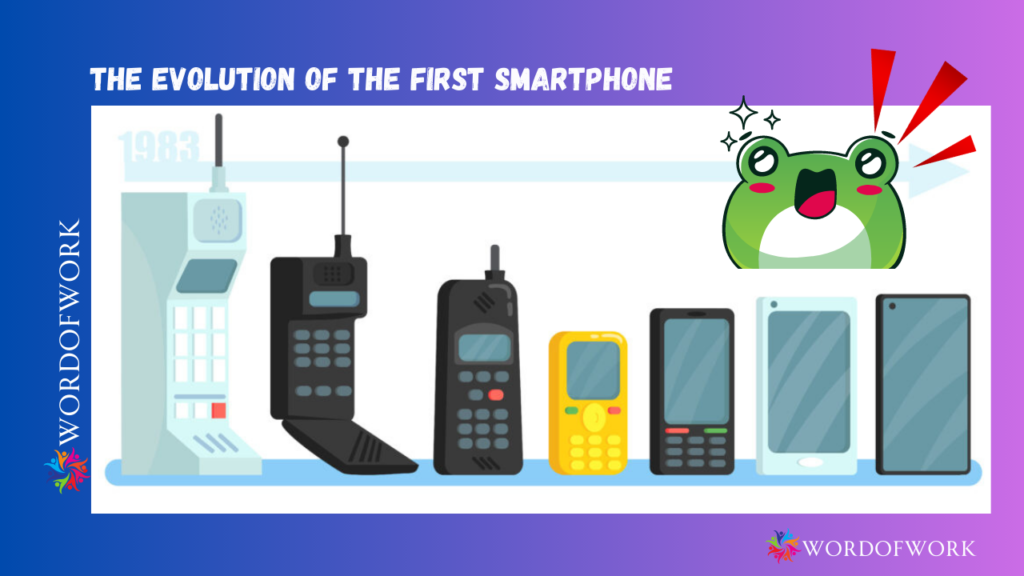
Table of Contents
Introduction : The Evolution of the First Smartphone
The first smartphone marked a pivotal moment in technological history, forever altering the way we communicate, work, and navigate the digital landscape. This article embarks on a journey to explore the origins, innovations, and impact of the first smartphone and how it laid the foundation for our modern interconnected world.
The Genesis of the First Smartphone
The first smartphone emerged at the intersection of mobile communication and computing technology. Its creation was driven by the vision of merging telephony, computing power, and convenience into a single device.
Technological Breakthroughs
The birth of the first smartphone hinged on numerous technological breakthroughs, including advancements in microprocessors, battery efficiency, and touch screen technology.
Shaping User Interaction
User interaction underwent a revolution with the introduction of touch screens and intuitive interfaces. The first smartphone transformed a complex array of functions into simple gestures.
From Utility to Lifestyle
The initial purpose of the first smartphone was functional communication, but it quickly evolved into an integral part of modern lifestyles, offering entertainment, information, productivity, and connectivity. To delve deeper, let’s explore the transformative journey: The Evolution of the First Smartphone. As technology advances, the smartphone’s role in healthcare, education, remote work, and environmental sustainability is poised to expand.
Smartphones: A Miniature Universe
The modern smartphone has become an all-in-one device, housing a camera, music player, navigation system, health tracker, and more, condensing various aspects of life into a handheld gadget.
The Advent of App Ecosystems
App stores gave rise to a diverse ecosystem of applications, turning smartphones into versatile tools that cater to individual interests, needs, and hobbies.
Impact on Communication
The first smartphone redefined communication, transcending voice calls to include text messages, emails, video calls, and social media interactions, connecting people globally.
Cultural and Societal Transformation
Smartphones catalyzed cultural shifts, influencing how we consume media, share experiences, engage in activism, and document our lives through photos and videos.
Challenges and Concerns
As smartphones became ubiquitous, concerns about screen addiction, privacy breaches, cybersecurity threats, and the digital divide emerged, prompting critical discussions.
The Accelerating Pace of Innovation
The first smartphone ignited a race of innovation, prompting manufacturers to constantly enhance hardware capabilities, refine software experiences, and introduce novel features.
Security and Privacy Considerations
As smartphones store vast amounts of personal data, ensuring security and privacy has become paramount, leading to the implementation of biometric authentication and encryption measures.
The Evolution Continues
The legacy of the first smartphone is evident in each subsequent model. Foldable screens, 5G connectivity, augmented reality, and AI integration are just a few examples of ongoing evolution.
Embracing the Future
The impact of the first smartphone reverberates into the future. Let’s Exploring the Transformative Journey: The Evolution of the First Smartphone -As technology advances, the smartphone’s role in healthcare, education, remote work, and environmental sustainability is set to expand.
Conclusion
The first smartphone transcended being a mere gadget; it sparked a revolution that forever changed how we interact, learn, entertain, and communicate. As we celebrate the journey from the first smartphone to today’s pocket-sized powerhouses, we look ahead to the boundless possibilities they hold.
FAQs
- Who created the first smartphone? The IBM Simon Personal Communicator, also known as IBM Simon, is often considered the first smartphone. It was developed by International Business Machines (IBM) and manufactured by Mitsubishi Electric, released in 1994.
- What were the key features of the first smartphone? The IBM Simon combined the functionalities of a mobile phone and a personal digital assistant (PDA). It had a touch screen, could make phone calls, send emails, and had basic organizer features.
- How has the first smartphone influenced design and innovation? The first smartphone laid the groundwork for subsequent innovations, inspiring the integration of diverse features, enhanced user interfaces, and sleeker designs in modern smartphones.
- What challenges did the first smartphone face upon its release? The first smartphone faced challenges related to battery life, size, and cost. Additionally, the concept of a phone with computing capabilities was novel, requiring user education.
- What is the current market status of smartphones? Smartphones have become an essential part of global culture, with various manufacturers competing to offer cutting-edge features, improved performance, and enhanced user experiences.

